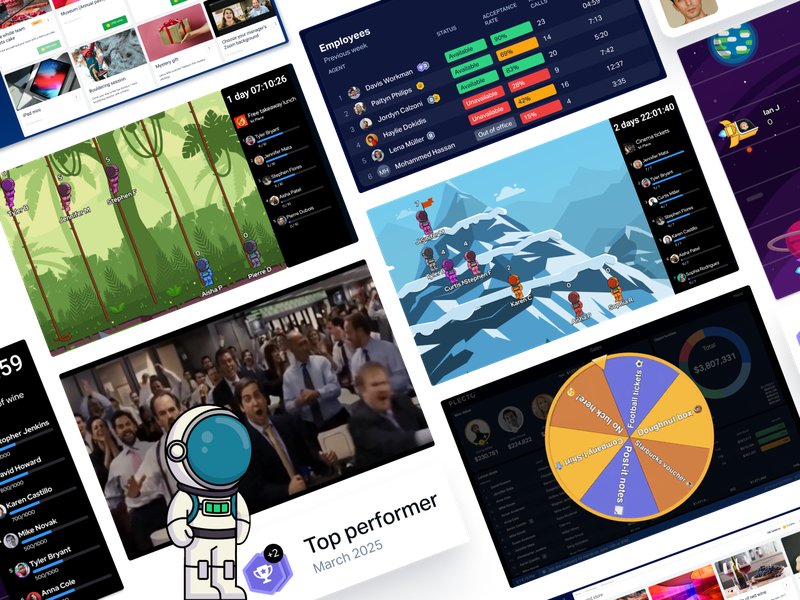With Gallup suggesting that at least 50% of the US workforce is quiet quitting, it’s more important than ever for managers to know and understand the ins and outs of different management styles so that they can choose the best management style to engage their employees, keep them satisfied in their jobs, and performing their best. If you’re unfamiliar with this concept, check out this article to find out how to spot quiet quitting and nip it in the bud before it’s too late.
Do you dream of being the manager that everyone in your company wants to work for? Then keep reading to discover the five types of management styles most employees prefer and how to choose the best management style for your team.
5 Types of Management Styles for Effective Leadership
Unfortunately, most of us have worked – or will work – for a bad manager at some point in our careers. Maybe the person wasn’t cut out to be a manager, but it’s more likely that their management style wasn’t appropriate for the situation. Successful management hinges on the manager’s ability to choose the best management style for the teams, projects, tasks, and type of business they’re running. Failure to identify and adapt to these requirements kills employees’ motivation, reducing work quality and productivity while possibly leading to an epidemic of quiet quitting and high turnover.
Here are five of the best types of management styles, including guidance on when to use them – and when not to use them.
1. Consultative
Let’s start off with what’s broadly considered the benchmark of modern leadership. Consultative types of management styles use ongoing dialogue and 1:1 status meetings to monitor progress and solicit feedback. Managers using these types of management styles have an open-door policy that encourages open and honest communication about what’s working and what isn’t working. This leads to high engagement, outstanding productivity, and minimal turnover. The downside is that it can be time-consuming and lead to “designing by committee.”
➡️ Consultative Management in Action
A consultative manager generally holds regular 1:1 status meetings in which they invite each employee to give a status update on their tasks and discuss what’s going well and what could be going better. The manager uses this information to allocate resources, prioritize weekly goals, set project timelines, and make general improvements to the workplace.
Build your first dashboard.
Start your 14-day free trial today
2. Democratic
Collaboration is at the center of democratic management styles, where everyone has a say and management’s decisions are based on input from the team. This is widely accepted as the best management style because it crowdsources ideas while helping employees feel that the company values their contributions and that they’re empowered to shape its future. This often translates into higher productivity because employees are more invested in the outcome of their daily work and the company’s future success. However, much like the consultative approach, it can be inefficient compared to other types of management styles while causing friction in the team if a consensus can’t be reached or someone feels like their ideas are constantly overlooked.
➡️ Democratic Management in Action
Democratic managers see themselves as facilitators. They’ll usually hold a team meeting to present the project or task at hand and then facilitate a discussion about how to approach it. During regular team meetings with time in between for employees to work on their assigned tasks, the team will together decide on goals, milestones, and next steps until the project is completed.

3. Laissez-Faire
Laissez-faire managers are mentors more than managers. This employee-led way of working is the best management style for hands-off leaders who are comfortable keeping an eye on the big picture while trusting their employees to make their own decisions to get the job done – and to ask for guidance if and when they need it. This is the best management style for leading highly motivated employees with exceptional time-management skills and it works particularly well in creative fields because it fosters innovation and creativity with few barriers. Its main downside is that it can leave some employees feeling lost and in need of direction, and it definitely makes it easier to slack – or quiet quit.
➡️ Laissez-Faire Management in Action
Laissez-faire managers monitor their team’s progress from afar while expecting them to hit certain performance metrics with little guidance. Their outlook is that as long as their employees are knowledgeable, motivated, and productive, there’s no reason to muddy the waters. They’ll be involved at the very start of the project to share information and make sure the team understands what needs to be done and again at the end to review the outcome or facilitate an after-action review.
4. Persuasive
This is one of the most traditional types of management styles. Persuasive managers are the decision-makers, but they place an emphasis on helping their employees to understand why their decisions are best for the company’s future. They’re transparent in the rationale behind their decisions, which improves employees’ willingness to accept their decisions. This management style uses reason and logic to motivate employees, and it works well with inexperienced teams. The downside is that it doesn’t provide the opportunity for dialogue or for employees to share their thoughts and ideas.
➡️ Persuasive Management in Action
The company has hired an external consultant to help solve some operational challenges. The persuasive manager “sells” the consultant’s findings and the resulting recommendations to the team with an explanation of the expected outcome and why it’s the best course of action.

5. Authoritative/Authoritarian
This is one of the first types of management styles that usually comes to mind when people think of “management.” Authoritative or authoritarian types of management use clear direction and strict hierarchies in which there’s little ambiguity about who’s responsible for what. These types of managers always make the final decision and they expect complete obedience from their employees.
While it might be hard to believe that this is ever the best management style, it can have a positive effect on performance – particularly in companies with inexperienced employees who need a lot of guidance. It’s also quite effective in handling crises or when efficiency is paramount. This one is best used carefully and sparingly, perhaps even temporarily under extraordinary conditions. Using it on the regular could make employees feel micromanaged and leave them wondering whether they’re working for a manager or a dictator.
➡️ Authoritative/Authoritarian Management in Action
This type of management style is “my way or the highway.” Authoritative managers tell their employees what to do, when to do it, and how. These managers keep close tabs on what their employees are doing and make all the decisions.
How to Choose the Best Management Style for Your Team
You might be wondering, “How do I choose the best management style for my team?” Many managers make the mistake of using a one-size-fits-all approach without considering which approach is likely to bring out their team’s best performance. The best management style comes down to these three factors:
1. The Manager’s Skills and Personality
Managers do their best work when they feel comfortable and confident. Therefore, it’s crucial to choose a management style that aligns with your skills and personality. Someone who values collaboration and interpersonal relationships isn’t likely to be a good authoritative manager.
2. The Team
It’s important to consider your team’s expertise and needs. An experienced team is likely to respond best to the first three types of management styles on our list, whereas inexperienced teams will probably prefer the guidance of a persuasive manager, while really junior teams might appreciate an authoritative manager’s clear guidance. In some situations, it might be necessary to vary the approach when managing different team members who have various levels of experience or just different leadership needs.
3. The Company's Culture
Company culture is one of the biggest influences on employees’ day-to-day lives. Therefore, it’s important that the leadership reflects the company’s culture. A disconnect in management style could cause friction within the team, which could lead to employee dissatisfaction – and ultimately, turnover.
Management is an art and a science, and it might be necessary to switch styles based on the current situation and immediate projects. The most important thing is to read your employees’ cues, monitor their performance, and remain flexible in how you manage your team.
Plecto Can Help You Succeed
Regardless of your management style, Plecto can help you get the best out of your team. Plecto’s real-time KPI dashboards are an excellent foundation for your 1:1 meetings and for giving employees concrete goals to work toward while tracking their progress in a motivating and visual way. For employees who need a little nudge, Plecto provides built-in gamification features as well as leaderboards, instant notifications, points, and badges to help keep them engaged and motivated.
Sign up for a free 14-day trial and see how Plecto can help you manage your team and lead them to success!




